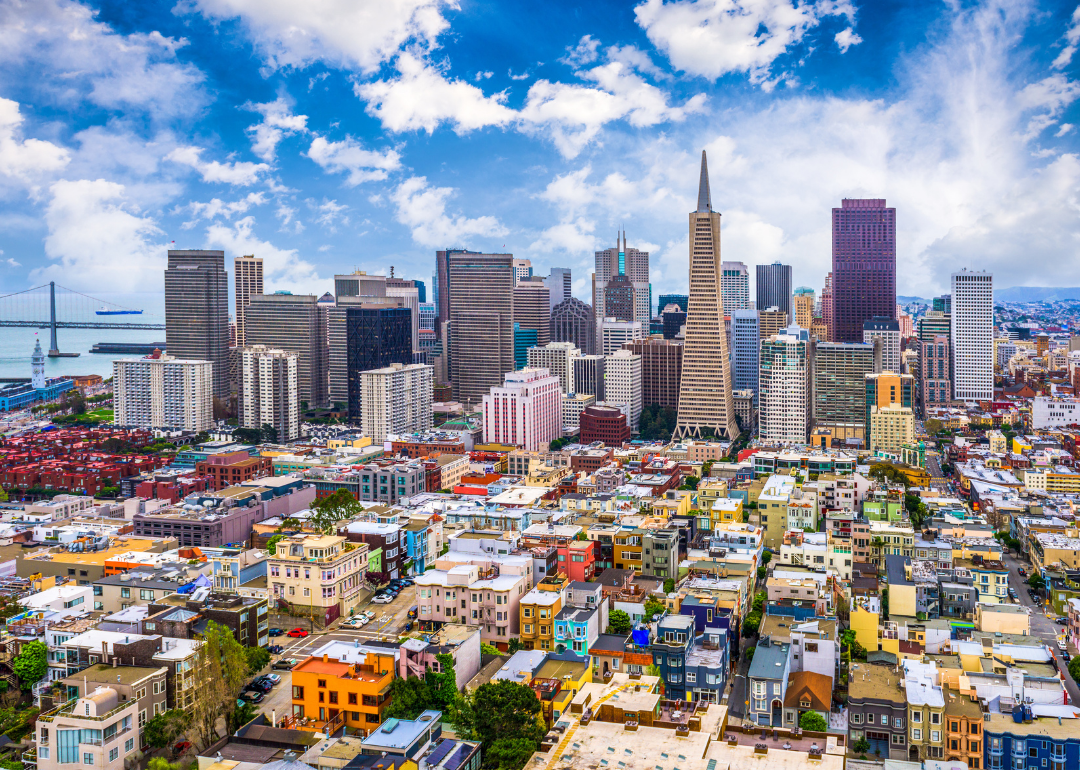
Cities where retail real estate has been most affected by COVID-19
Cities where retail real estate has been most affected by COVID-19
As COVID-19 shuttered businesses in 2020, the pandemic made certain problems for commercial real estate worse while adding new challenges. An already-shrinking retail market was joined by a drastically reduced office market as work-from-home culture took off. Now, with 49.1% of the U.S. population fully vaccinated (as of July 25) and the economy working toward a new normal, those in the commercial real estate community are faced with difficult choices for how to recover, evolve, and prosper.
To determine where retail real estate has been most affected by COVID-19, Stacker analyzed the Cushman & Wakefield Q1 2021 MarketBeat report. That report details commercial real estate activity each quarter. Each city's data contains vacancy rates, comparisons with the second quarter of 2020 when COVID-19 took off, and net absorption—or the difference between the sum of square feet that became occupied by commercial spaces and the sum of square feet that became vacant. Cities are ranked by their change in vacancy rate between the second quarter of 2020 and the first quarter of 2021.
Activity in commercial real estate can be one sign that a city is recovering from the economic dislocation brought on by the coronavirus pandemic. This includes significant increases in retailer demand for warehouse space to meet e-commerce needs. For each of these cities where retail real estate faced extraordinary challenges, we've included information on major, recent real estate deals and other signs of promise within the market.
Keep reading to learn more about the 10 U.S. cities where real estate has been most affected by COVID-19—and how these locations are working to recover their commercial markets.
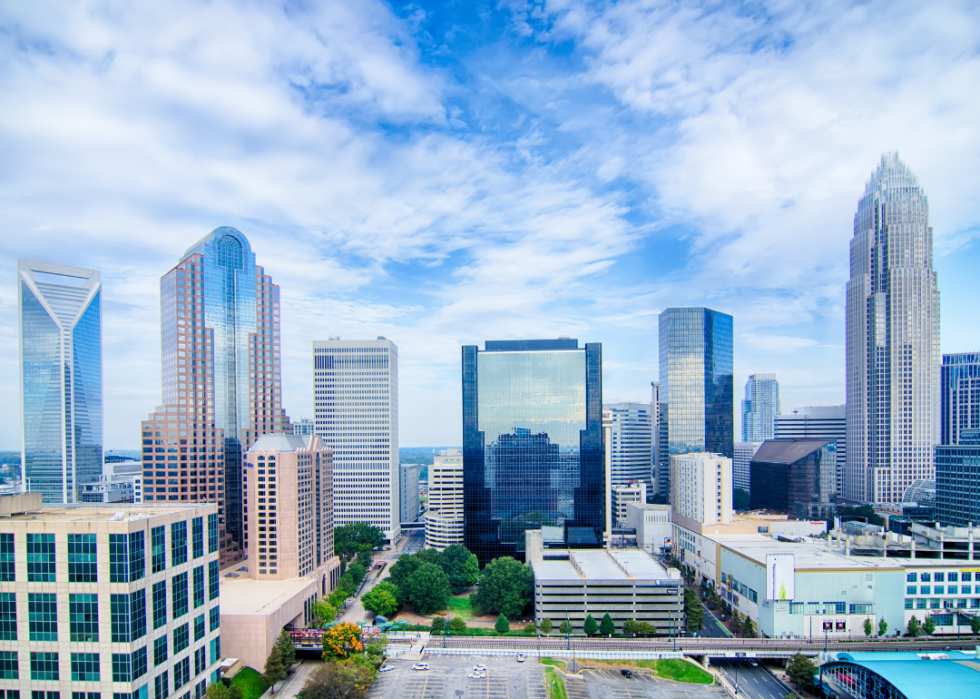
#10. Charlotte, North Carolina
- Overall vacancy rate: 14.8% (4.4% higher than in Q2 of 2020)
- Asking rent: $29.53 per square foot (all classes, 3.4% higher than in Q2 of 2020)
- Net absorption: -500,923 square feet
A report by the Charlotte Regional Business Alliance found some improvement to the area’s economy at the beginning of 2021. Demand for hotel rooms in March 2021 was the highest it had been since the start of the coronavirus pandemic, though the amount hotels could charge had not yet caught up. Unemployment claims were still high, and Black residents were particularly affected. Job postings were on the rise, though they were still down from a year earlier.
John Connaughton, a professor at the University of North Carolina, told the Charlotte Observer he expected the state to recover fully from the pandemic, which closed hotels and restaurants and left thousands without jobs. Employees in other businesses, including finance, were able to move more easily into working from home.
Promising signs in the retail real estate sector include a Burlington department store chain coming to Charlotte in the fall; the opening July 23 of the 420,000-square-foot First National Bank Tower in uptown Charlotte; and plans to transform the North Carolina Eastland Mall into academy headquarters for Charlotte Football Club, the new Major League Soccer expansion team.
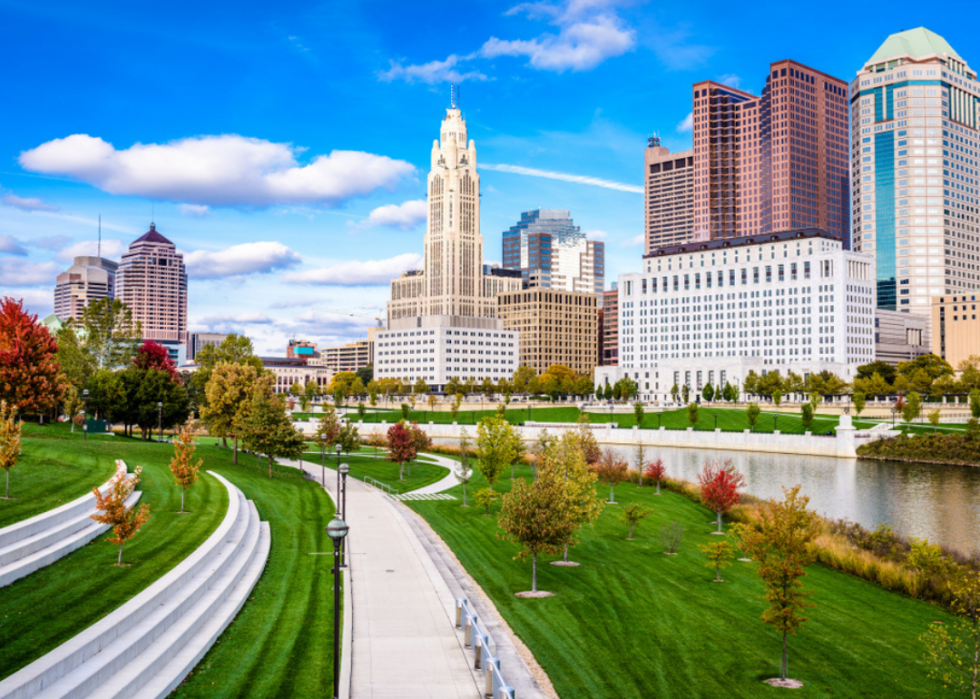
#9. Columbus, Ohio
- Overall vacancy rate: 22.2% (4.6% higher than in Q2 of 2020)
- Asking rent: $20.88 per square foot (all classes, 1.2% higher than in Q2 of 2020)
- Net absorption: -696,003 square feet
Ohio lost a net of 350,200 jobs in 2020. The Wall Street Journal reported in February 2021 that Columbus and other Midwest cities had fared better than other places because they had a varied economy, white-collar jobs that workers could do from home, and less dependency on tourism.
Ohio’s economy overall is recovering, with an unemployment rate that fell from 5.6% in December 2020 to 4.7% in April. Filings for unemployment insurance were down 74% in May 2021 compared to April of the previous year. Columbus, along with cities such as Savannah, Georgia, have faced record levels of warehouse space inquiries from retailers seeking to store goods for online sales. JLL predicts industrial real estate demand in Columbus to jump 61% in 2021 over 2020 following 13.7% increase the year prior. Part of the focus on Columbus is the city's proximity: Almost 50% of the U.S. population is within a one-day drive.

#8. Sacramento, California
- Overall vacancy rate: 12.6% (4.7% higher than in Q2 of 2020)
- Asking rent: $25.83 per square foot (all classes, 9.7% higher than in Q2 of 2020)
- Net absorption: 50,540 square feet
Sacramento did better than its region or the state as a whole, likely because it is the state capital. Government offices probably protected it from severe job losses that other places experienced. Unemployment for Sacramento was 6.9% in March 2021, lower than the state’s rate of 8.2%. Employment was back by 70%, according to the Public Policy Institute of California.
Jobs in hotels, restaurants, and arts and entertainment did see heavy losses, but government jobs were down only by 3% as state revenues did better than expected. Construction and transportation also did well.
Sacaramento's city council on July 20 approved a resolution aiming to provide rent relief to retail businesses and restaurants in city-owned property downtown that were adversely affected by COVID-19. Signs of growth are apparent throughout the Sacramento metro area: Ethan Conrad properties in May bought the Sierra Business Center in Sacramento for $9.5 million, and commercial real estate lender Tauro Capital Advisors Inc. opened a Midtown Sacramento office this year. With overall demand for office space down, Sacramento redevelopers are eyeing unused office spaces throughout the city for potential conversions into multifamily apartment units.
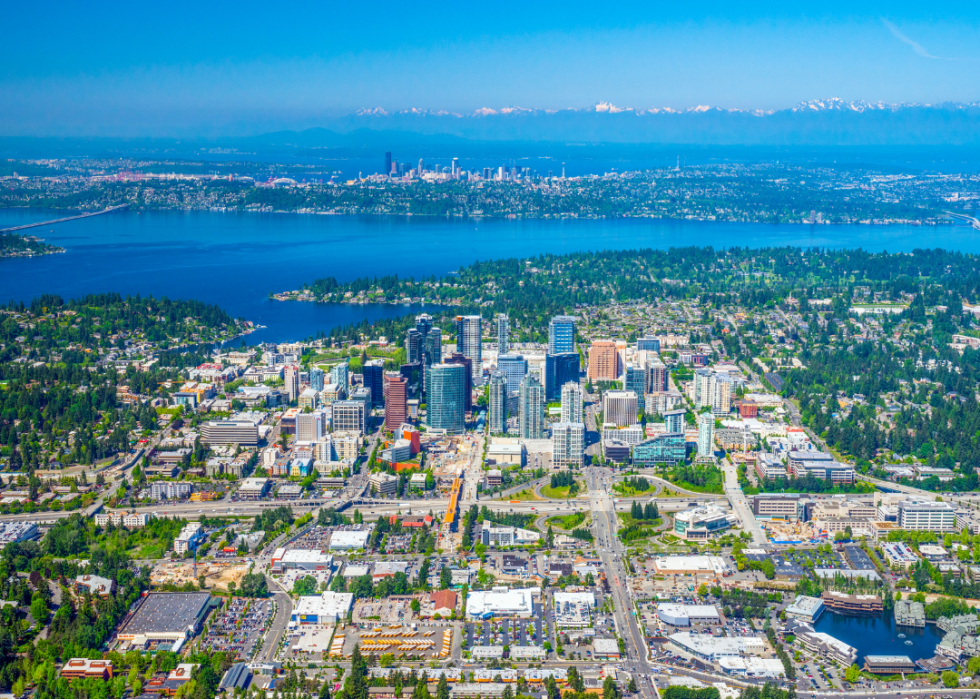
#7. Puget Sound (Eastside), Washington
- Overall vacancy rate: 9.9% (5.4% higher than in Q2 of 2020)
- Asking rent: $37.85 per square foot (all classes, 1.3% higher than in Q2 of 2020)
- Net absorption: -551,437 square feet
Technology companies such as Google, Microsoft, and Amazon kept the area’s economy from a catastrophe, the Puget Sound Business Journal reported in May. The president of the consulting company Community Attributes, Chris Mefford, cautioned the economy would not fully recover from the coronavirus pandemic until 2024.
The Eastside was second only to Seattle in the number of commercial vacancy increases in the region. Convention centers, for example, still face uncertainty, though some unemployment rates are back to where they were before the coronavirus.
New construction is most prevalent on the Eastside and in Seattle, with 19 major office projects in progress across both areas. The North Creek Parkway Center and 22422 29th Avenue are among two of the biggest commercial sales in the neighborhood, with the Eastside getting two additional, significant boosts from investments by Facebook and Google.
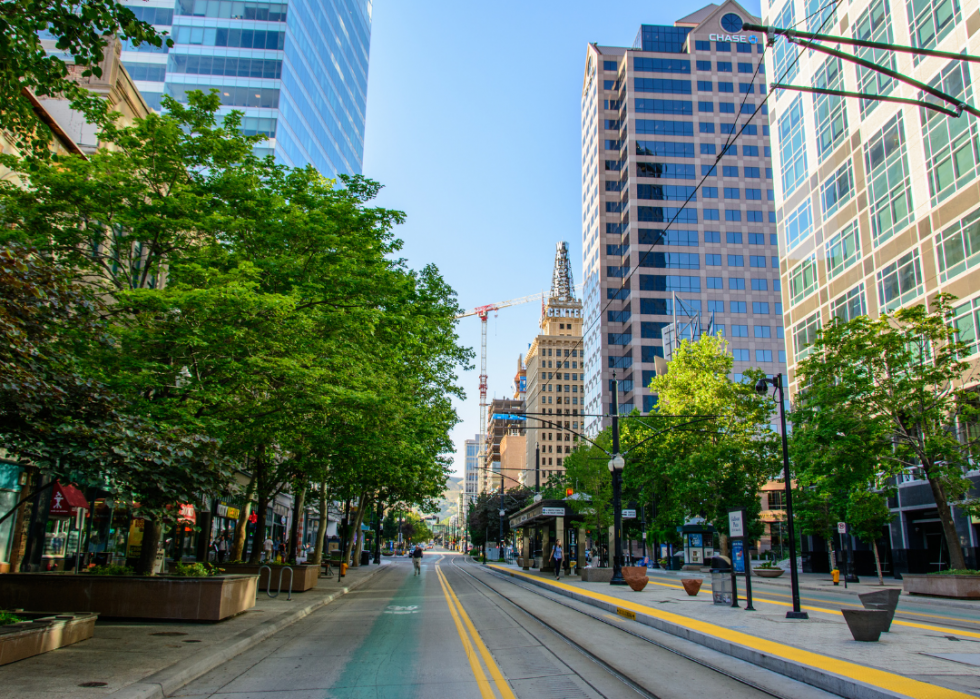
#6. Salt Lake City
- Overall vacancy rate: 16.6% (5.5% higher than in Q2 of 2020)
- Asking rent: $24.12 per square foot (all classes, 1.3% higher than in Q2 of 2020)
- Net absorption: -206,002 square feet
In downtown Salt Lake City, commercial construction that began before the coronavirus pandemic continued. The area suffered the loss of jobs in retail, hotels, restaurants, and tourism; but by the end of 2020, Utah had seen job growth of 0.5%, Salt Lake Chamber President and CEO Derek Miller told The Salt Lake City Tribune.
Utah's gross domestic product is expected to grow by about 6.2%, and the legislative year ended with a budget surplus and tax cuts. The economy was strong and diversified when the coronavirus pandemic began, and only the District of Columbia had a higher proportion of people working from home. Jobs were created in construction, financial and professional services, and retail specializing in household improvements, and warehouses and distribution centers were being constructed at the edge of Salt Lake City.
Biotech company Recursion announced July 1 its plans to double the size of its headquarters downtown, signing a new lease with Vestar for 100,000 more square feet. And on July 9, PCCP, LLC announced it was issuing a $29 million construction loan to Rockworth Companies to develop TwentyOnes, a 108-unit multifamily project in Salt Lake City with 20,500 square feet of retail on the first floor.
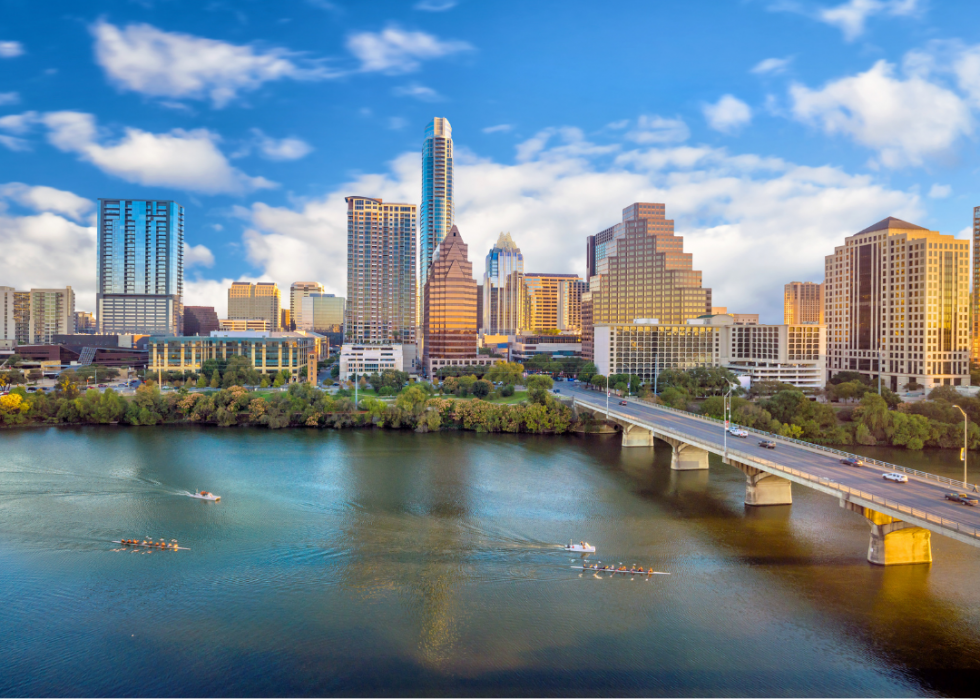
#5. Austin, Texas
- Overall vacancy rate: 18.2% (5.8% higher than in Q2 of 2020)
- Asking rent: $43.11 per square foot (all classes, 5.6% higher than in Q2 of 2020)
- Net absorption: -337,792 square feet
The number of small businesses in operation in Austin fell by about 30% between March 2019 and March 2021, and those that are open saw their revenue drop 37%, according to researchers from the University Texas Cockrell Engineering School. Job openings in food services, tourism, and entertainment also are down, though there are more openings overall. The number of riders on public transportation dropped about 47%.
Since then the city has seen promising signs of recovery, includingthe commercial and retail real estate markets taking off and many retailers looking to not just return to normal operations but to expand. The city is additionally attracting new commercial real estate investment and corporate relocations from out-of-state.
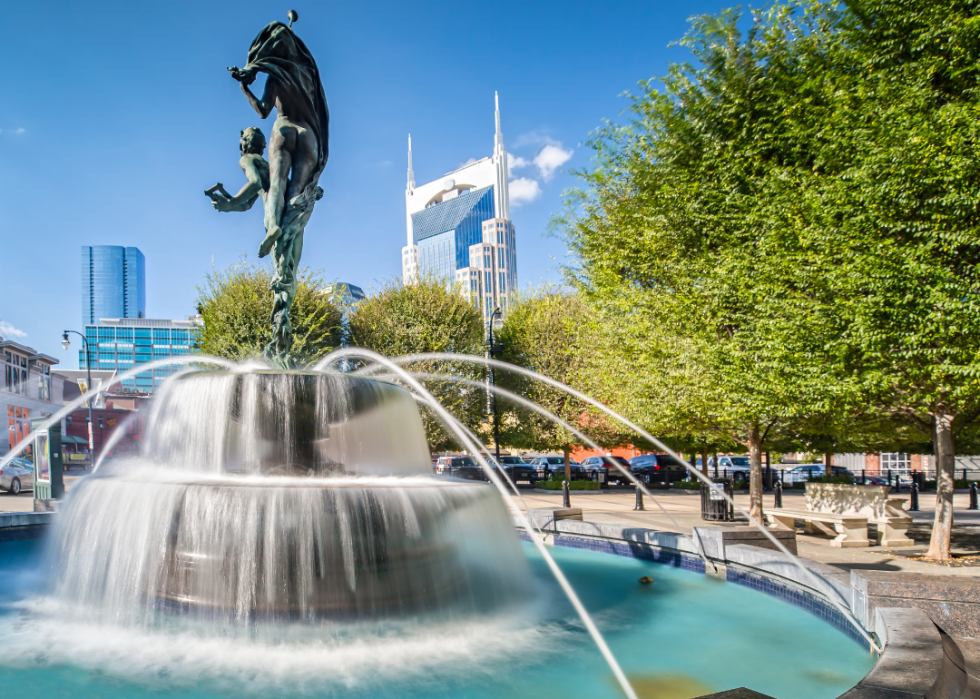
#4. Nashville, Tennessee
- Overall vacancy rate: 18.1% (5.9% higher than in Q2 of 2020)
- Asking rent: $31.42 per square foot (all classes, 7.9% higher than in Q2 of 2020)
- Net absorption: -278,460 square feet
Nashville’s housing market stayed strong through the coronavirus pandemic—a result of low interest rates, few houses, and demand for a place in the city. Its commercial real estate was ranked a top-10 market by the National Association of Realtors in March. The city suffered, though, from the decline of tourism, its largest revenue generator. Hotel business fell 47%, and the restaurant and bar industry dropped 17%.
At the end of 2020, more than 12,500 jobs were added to Tennessee’s economy, bringing with them more than $5 billion, according to the state’s Department of Economic and Community Development.
Nashville Yards and Anschutz Entertainment Group (AEG) in July announced plans to co-develop the entertainment district and concert venue already planned at Nashville Yards, which will include a music venue, three residential towers, 275,000 square feet of creative office space, an eight-screen cinema, and a plethora of food, drink, and retail offerings. Many restaurants are also planning expansions into the Nashville market. Also in July, Principal Real Estate Investors announced a $63.2 loan to Chartwell Residential to construct a luxury mixed-use development near Downtown Nashville that would feature residential dwellings and retail offerings.
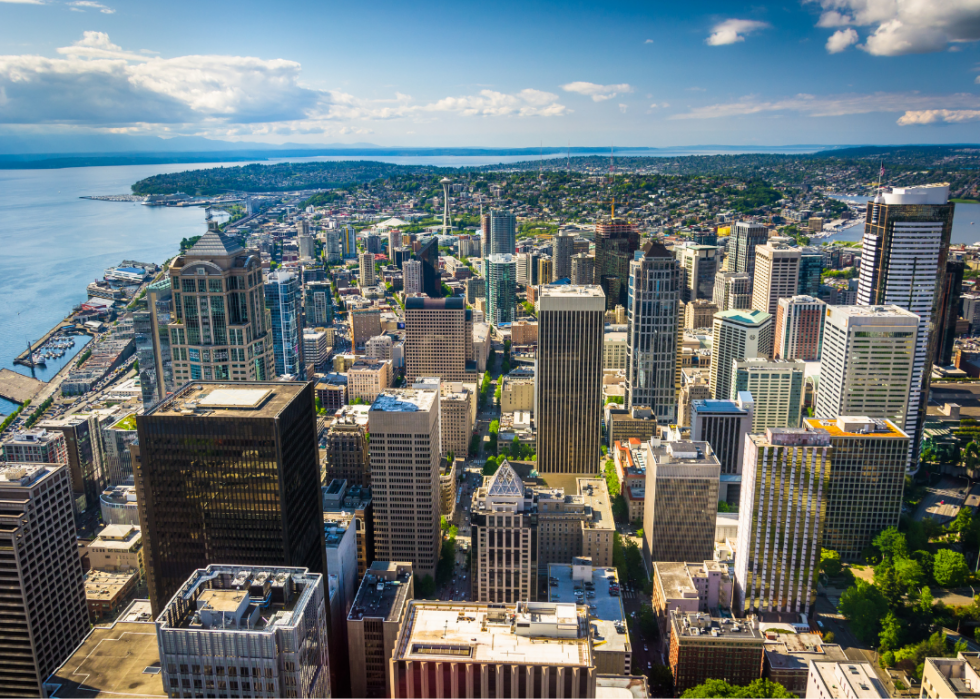
#3. Seattle
- Overall vacancy rate: 17.2% (8% higher than in Q2 of 2020)
- Asking rent: $39.69 per square foot (all classes, 1.9% lower than in Q2 of 2020)
- Net absorption: -1,825,204 square feet
Washington, like many places, saw two results from the coronavirus pandemic with very different economic experiences by the wealthy and poor. Seattle had neighborhoods with low-wage workers whose jobs disappeared, or who were on the front lines in delis, hospitals and other places and more at risk for COVID-19. Downtown Seattle saw bars and restaurants close and tourist stores without visitors. In the second quarter of 2020, smaller businesses saw their gross income fall by 24%.
The Downtown Revitalization Working Group, an initiative brought together by Mayor Jenny Durkan in February, has been strategizing efforts to get and keep small businesses open and supporting workers who need to come into the city to help with a recovery. In May, Seattle beat out Manhattan as the #1 spot for foreign investment in commercial real estate.
Kite Realty in July agreed to pay $2.79 billion to acquire Retail Properties of America, adding to Kite's open-air shopping center portfolio and getting the largely Florida- and Indiana-based company a foothold in the Seattle market.
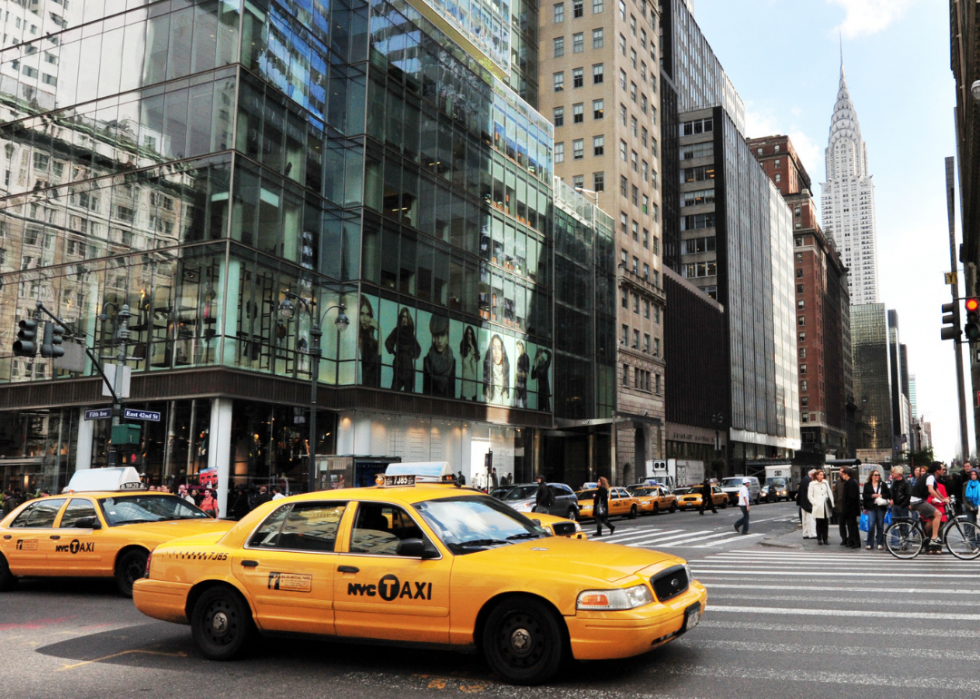
#2. New York (Midtown South)
- Overall vacancy rate: 17% (8.3% higher than in Q2 of 2020)
- Asking rent: $70.72 per square foot (all classes, 7.4% lower than in Q2 of 2020)
- Net absorption: -1,450,430 square feet
New York City lost the greatest share of jobs of any of the country’s largest cities. As of June 2021, it had regained fewer than half of those jobs—compared to two-thirds for the rest of the country—for a loss of 500,000 positions. Subway ridership is less than half of what it was before the coronavirus pandemic, and midtown Manhattan continues to struggle. A business group called the Partnership for New York City expects that in September only 62% of office workers will return, and most for only a few days a week. Manhattan is heavily dependent on office workers, business travelers and tourists, and the restaurants, hotels, and other services built around them.
Businesses have capitalized on a drop in rents in the city, according to commercial real estate firm CBRE: in the second quarter, restaurant chains accounted for 23 lease signings totaling 83,333 square feet of space; apparel businesses represented 10 leases, totaling 49,236 square feet.
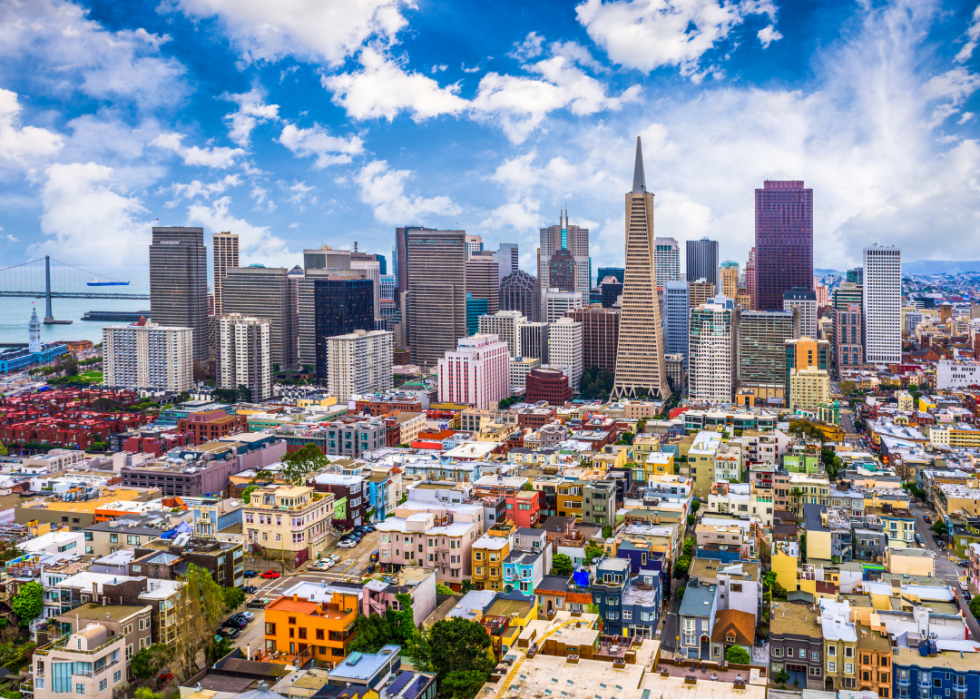
#1. San Francisco
- Overall vacancy rate: 18.7% (9.8% higher than in Q2 of 2020)
- Asking rent: $73.76 per square foot (all classes, 11.4% lower than in Q2 of 2020)
- Net absorption: -1,531,996 square feet
In January, the Guardian reported the commercial real estate market in San Francisco was in collapse. Leases on new offices in 2020 had dropped 71% as offices closed because of the coronavirus pandemic and employees worked remotely.
More and more workers have said they want to return to San Francisco and the Bay Area as vaccination rates rise and businesses reopen. Development is picking back up across the city, with plans in place for a large Costco warehouse facility and the mayor rolling out a $12 fund to help struggling small businesses.



